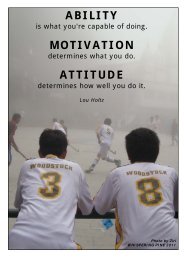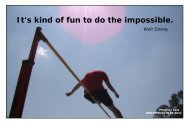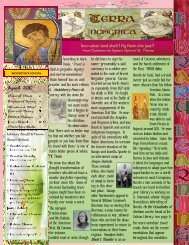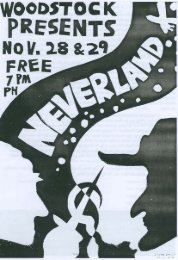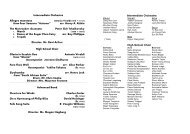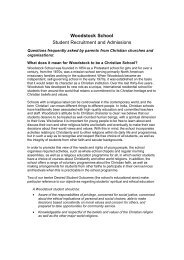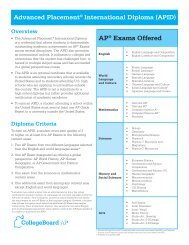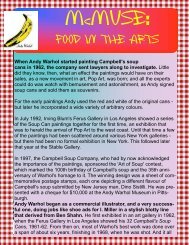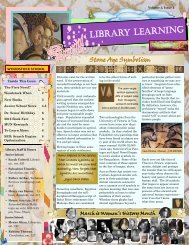The Sign of the Unicorn - Woodstock School
The Sign of the Unicorn - Woodstock School
The Sign of the Unicorn - Woodstock School
You also want an ePaper? Increase the reach of your titles
YUMPU automatically turns print PDFs into web optimized ePapers that Google loves.
WOODSTOCK SCHOOL<br />
Library Staff &<br />
Hours<br />
Senior <strong>School</strong>:<br />
Sarah Colwell,<br />
Librarian, ext. 520<br />
Subashini Timothy,<br />
Circulation, ext.<br />
517<br />
Es<strong>the</strong>r Arthur,<br />
Technical Services<br />
(cataloging), ext. 518<br />
Hours: 8am-6pm,<br />
M-F Extended<br />
Study Halls (sign-up<br />
only) 6:30-8:45 pm,<br />
Tues.-Thurs.<br />
<br />
Junior <strong>School</strong>:<br />
Meenu Khan, Librarian,<br />
ext. 127<br />
Rahima Thomas,<br />
Circulation, ext. 127<br />
Hours: 8am-5pm,<br />
<strong>The</strong> <strong>Sign</strong> <strong>of</strong> <strong>the</strong> <strong>Unicorn</strong><br />
<strong>The</strong> 5000<br />
year‐old<br />
script <strong>of</strong><br />
<strong>the</strong> Indus<br />
Valley civilization<br />
appears in fragments<br />
no longer<br />
than a haiku, so archaeological<br />
evidence<br />
suggests<br />
that <strong>the</strong> people<br />
who used it weren’t<br />
writing novels.<br />
But nobody knows<br />
for certain because<br />
this early system <strong>of</strong><br />
writing has never<br />
been deciphered.<br />
<strong>The</strong> meaning <strong>of</strong> <strong>the</strong><br />
ancient symbols <strong>of</strong><br />
India is one <strong>of</strong> <strong>the</strong><br />
great puzzles <strong>of</strong> linguistics.<br />
For over 100 years,<br />
linguists, archaeologists<br />
and even computer<br />
experts have<br />
tried to analyze <strong>the</strong><br />
nearly 4000 symbols<br />
that have been<br />
unear<strong>the</strong>d in places<br />
like Harappa and<br />
Mohenjo‐Daro.<br />
Since no single artifact<br />
contains more<br />
than 17 symbols in<br />
a group, most experts<br />
believe that<br />
<strong>the</strong> copper, bronze,<br />
stone and ceramic<br />
“writing” may have<br />
been stamp seals<br />
describing property<br />
and ownership,<br />
some kind <strong>of</strong> ritual<br />
code or emblems <strong>of</strong><br />
royal signiicance,<br />
like <strong>the</strong> Egyptian<br />
cartouche. If correct,<br />
this <strong>the</strong>ory<br />
would put <strong>the</strong> script<br />
into <strong>the</strong> category <strong>of</strong><br />
“proto‐writing,”<br />
similar to <strong>the</strong> ancient<br />
cuneiform <strong>of</strong><br />
Mesopotamia,<br />
which has proven to<br />
be more worldly<br />
than poetic.<br />
O<strong>the</strong>r analysts point<br />
out that <strong>the</strong> Indus<br />
characters are more<br />
intricate and beautiful<br />
than o<strong>the</strong>r examples<br />
<strong>of</strong> early<br />
scripts and that <strong>the</strong><br />
artifacts display iner<br />
craftsmanship<br />
than would have<br />
been devoted to<br />
routine recordkeeping.<br />
So <strong>the</strong><br />
mystery persists.<br />
No bilingual specimen<br />
like <strong>the</strong> Rosetta<br />
Stone has yet<br />
been found and <strong>the</strong><br />
script died out<br />
about 3000 years<br />
ago. While some<br />
linguists maintain<br />
that <strong>the</strong> Harappan<br />
script is related to<br />
ancient Brahmi<br />
and, accordingly,<br />
to Sanskrit and<br />
Hindi, o<strong>the</strong>rs believe<br />
that this early<br />
form <strong>of</strong> writing<br />
has more in common<br />
with <strong>the</strong> Dravidian<br />
languages<br />
that people<br />
continue<br />
to speak<br />
today in<br />
sou<strong>the</strong>rn<br />
India.<br />
Spectrographic<br />
analysis<br />
may con‐<br />
irm this<br />
<strong>the</strong>ory.<br />
How does<br />
science support linguistic<br />
analysis To<br />
learn more about<br />
this ancient and<br />
modern mystery,<br />
see Lost Languages,<br />
by Andrew Robinson.<br />
REF 411.09<br />
I know something<br />
you don’t know.
How to Make a Scientist Cry<br />
That’s not<br />
possible!<br />
Fa<strong>the</strong>r <strong>of</strong> <strong>the</strong> hydrogen bomb.



